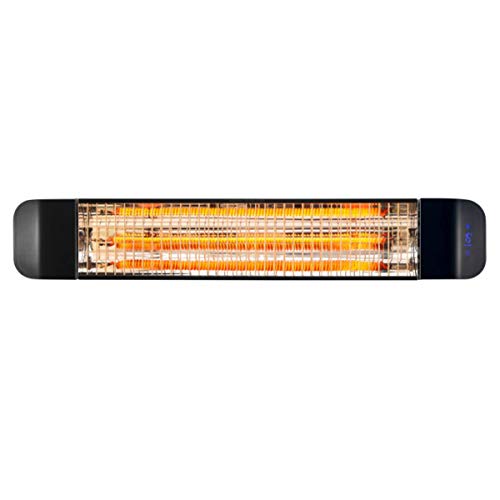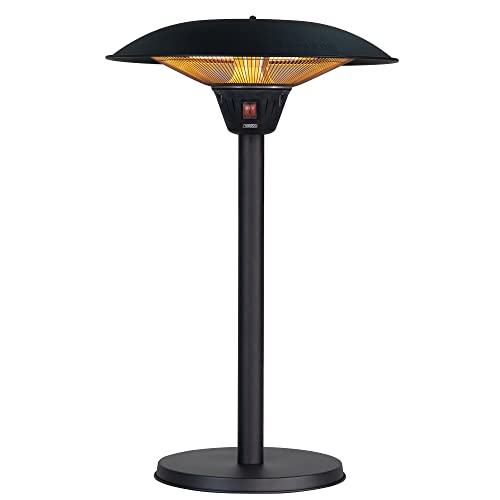Outdoor Heater For Patio Electric Tips To Relax Your Daily Life Outdoo…
페이지 정보
작성자 Beth 작성일 25-02-02 05:25 조회 5 댓글 0본문
 Selecting an Outdoor Heater For Your Patio Electric
Selecting an Outdoor Heater For Your Patio ElectricWhen choosing an outdoor heater for your electric patio, it is important to consider several factors including style and functionality. But, safety must always be the primary consideration.
Tabletop and freestanding patio heaters are relatively simple to install, while ceiling or wall-mounted heaters require a licensed electrician to ensure the proper installation. Be sure to check the manufacturer's installation and maintenance guidelines.
Safety Features
If you're using a gas or electric heater for your patio, the safety of yourself and your guests should be top of the list. This means having enough clearance between the heater and any other objects, including furniture and carpets. To minimize the risk of fire, flammable objects should be kept at a minimum of 3 feet from the heater on all sides. In addition, it is essential to keep an eye on the heat emitted by the device and avoid placing anything too close to it. The heat radiation can cause serious burns when it comes in contact with objects. Unexpected heater movements can cause fire hazards.
Electric propane, natural gas patio heaters come in many shapes and sizes. Their power source can affect the way they are used. For instance natural gas and propane heaters require adequate ventilation to prevent carbon monoxide poisoning as well as Nitric Oxide/nitrogen dioxide buildup. This is the reason why you should not use any gas heater indoors, regardless of the fuel type.
electric patio heater indoors patio heaters are a safer alternative, as they typically feature a stable base and an automatic shut-off in the event that the unit tips over or no longer sits on a flat surface. This is in addition to other security features like protection against overheating that shuts the heater off when it is too hot to touch. It is still recommended to keep pets and children away from the heat source however, since even a well-designed patio heater can pose a hazard.
Some models have an integrated device that cuts off the gas supply in the event that the flame ceases to burn. Bromic's infrared heaters are also designed to emit the heat directly onto people and objects rather than the air surrounding them. This makes them a great option for areas that have high winds or ventilation issues.
Heat Output
Take into consideration the amount of heat that an outdoor heater produces when shopping. This number is usually indicated in BTUs, and it helps you compare the performance of different models. Larger spaces require more BTUs to keep them warm, and the number will also differ based on how wet or windy a location is. Certain patio heaters can be placed on the ceiling or walls and others are portable. It is crucial to ensure that the heater is installed in a safe manner and that the cord is connected into a GFCI socket that will not cause short circuits or shocks.
If you're not ready purchase a new power source, the propane patio heater is a good option. These heaters run on propane liquid and can be filled from an external tank. They might have a higher temperature output than electric models and burn more fuel over time. However, they're a convenient option for Outdoor heater For Patio Electric spaces that have natural gas lines, and they're easy to use and maintain.
electric outdoor heaters for patio heaters are more flexible, and can be used for a variety of reasons. However they aren't as powerful as those powered by gas. They can be plugged into existing electrical outlets and offer flexible control options, such as adjustable heat settings and an integrated timer. Some models, such as infrared heaters, focus more on warming objects and individuals rather than the air, which makes them ideal for smaller and less enclosed areas.
The design of the heater you choose should also be considered particularly if it will be in close proximity to pets or children. Choose a model that has a safety shutoff feature to prevent injuries, and pick one with a stable base that can't be easily tipped over. Be aware that radiant heating generated by these units can cause burns to anyone who comes into close contact with it.
Certain types of outdoor heaters for patio electric heaters, such as wood-burning fire pits and chimineas, can be a more traditional option that adds an element of elegance to your home. They can produce a large amount of heat and provide an attractive glow, however they're not as effective in heating up an area than other kinds. They release pollutants into the air and should only be used only in areas that are well ventilated.
Controls
Extend the warmth of your outdoor space by adding a patio heater. These units provide radiant heat to keep your guests and you warm even after the sun has set. No matter if you prefer electric or gas models, there are plenty of options to choose from to meet your requirements. Before you make a decision the right one, there are a few things to consider.
The first thing to think about is safety. Whether your patio heater is gas- or electricity-powered you must ensure it has the right operating controls to safeguard yourself and others. Be sure to look for features such as tip-over auto shut-off to prevent an accident that could cause fire, and protection against overheating to prevent the unit from getting too hot. Make sure that the unit has a sturdy base and is stable. If the base is exposed, make sure it won't be an accident hazard for tripping or be too close to walkways or furniture.
The British thermal unit (BTU) is an indicator of the amount energy that the unit generates. The higher the number of BTUs, the more heat it emits. The Westinghouse Infrared Electric Patio Heater has an output of 50,000 btu/hour. This is more than enough to heat up an outdoor space that is small. If you're planning to use a heater in a larger space you may want to go for something that has more power or a longer lifespan.
Electric patio heaters are the easiest to set up and use since they plug into the 120 volt outlets that are standard. They can also be used in locations where it might not be feasible or safe to run gas lines for example, an outdoor outdoor heater for patio electric dining area under an awning or in garages. However, they won't generate as much heat as gas models and can increase your electric bill.
Gas patio heaters, on the other side are able to be connected to a natural gas or propane line, allowing them to heat a large space without difficulty. They can be controlled by a remote control or on an alarm, and some are even capable of automatically turning off and on at preset times to save energy.
Accessories
A patio heater will prolong the fun season by months if you like spending time outdoors with family and friends, but you find that it cools down too quickly. A patio heater, unlike a space heater which uses hot air to warm the air and then heats objects or people around the unit, makes use of infrared radiation to heat the area. The result is an efficient way to heat outdoor spaces and also a more aesthetically pleasing design.
You can choose between propane- or natural gas-powered units, based on the power and fuel source that will work best for your outdoor space. A gas patio heater offers more temperature output than electric models and can provide more radiant warmth for a larger space, but it will require access to natural gas lines or a large propane tank. If you'd prefer an alternative that is more portable consider a portable gas patio heater that can be powered by an internal propane tank, and can be turned off and on using an electronic remote or set to run by a timer.
You can also opt for an electric patio heater, which emits infrared heat with a plug-in donyer power electric patio heater source. These units are typically smaller and lighter and are a great option for smaller patios or balcony. These models often come with adjustable heating settings, so you can choose the perfect amount of warmth to suit your space. Think about a patio heater that can withstand high wind when you intend to use it in a chilly region.
Another alternative is to choose a pellet patio heater that uses compressed wood as its fuel source to produce radiant heat. They are a green and sustainable alternative to propane heaters. However, they require a constant supply of gas or pellets and have a bigger carbon footprint than electric counterparts. You can also select a recessed electric patio heater free standing heater that can be hung from the ceiling. This removes the requirement for open flames, and preserves the sleek, minimal appearance of your deck.

댓글목록 0
등록된 댓글이 없습니다.
